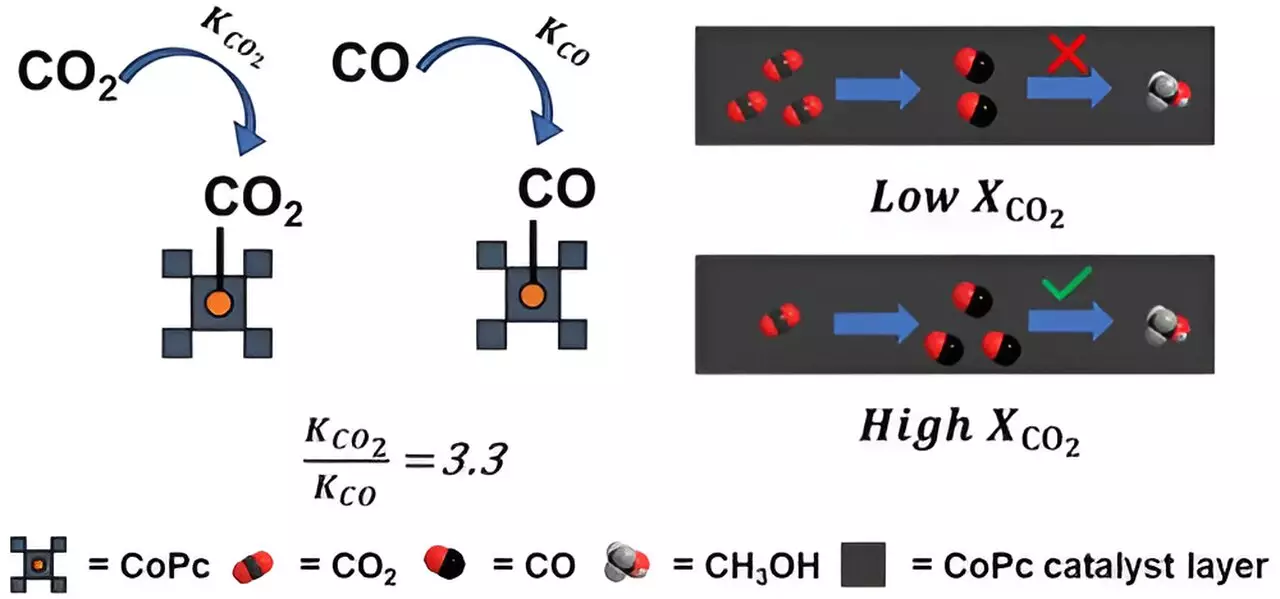In a groundbreaking study conducted at the University of Michigan, researchers have developed a catalyst material called cobalt phthalocyanine that has the potential to convert carbon dioxide, a major contributor to climate change, into renewable fuels such as methanol. This innovative approach could play a key role in reducing greenhouse gas emissions and providing a sustainable solution for clean energy production.
The process involves converting carbon dioxide (CO2) into carbon monoxide (CO) in the first step, followed by the conversion of CO into methanol in the second step. By using cobalt phthalocyanine as a catalyst, researchers have been able to successfully transform CO2 into methanol through multiple reaction steps. Methanol is a versatile fuel that could potentially be used to power vehicles in a more environmentally friendly way, making it a valuable asset in the fight against climate change.
While the conversion of CO2 into methanol has been industrialized, implementing this process on a large scale through electrochemical processes has proven to be a significant challenge. One of the key obstacles identified by the researchers is the stronger binding affinity of cobalt phthalocyanine to CO2 molecules compared to CO molecules. This results in the displacement of CO molecules by CO2, preventing the further conversion of CO into methanol.
To address this issue, the researchers propose redesigning the cobalt phthalocyanine catalyst to enhance its interaction with CO and reduce its binding affinity to CO2. By strengthening the catalyst’s ability to bind with CO molecules, the researchers believe that they can overcome this roadblock and enable the efficient conversion of CO2 waste into methanol fuel on a large scale. This approach could revolutionize the way we produce renewable energy and significantly impact the ongoing efforts to combat climate change.
The development of catalyst materials like cobalt phthalocyanine opens up new possibilities for converting carbon dioxide into valuable renewable fuels. By leveraging advanced computational modeling and experimental techniques, researchers are able to gain a deeper understanding of the chemical processes involved in this conversion process. With further research and innovation, we may soon witness the widespread adoption of techniques that can effectively mitigate the effects of climate change and transition towards a more sustainable energy future.


Leave a Reply